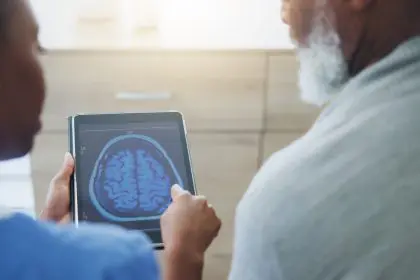Bilingualism offers more than just the ability to navigate multiple languages—it also has a profound impact on brain health. Research has increasingly shown that speaking more than one language can build cognitive reserve, a form of mental resilience that helps delay the symptoms of neurodegenerative diseases, including Alzheimer’s. This natural defense mechanism is proving to be one of the most compelling arguments for promoting language learning throughout life.
Understanding cognitive reserve
Cognitive reserve is the brain’s ability to improvise and find alternative ways of doing things. Think of it as a mental buffer that allows individuals to function normally despite age-related changes or brain damage. While genetics and overall lifestyle contribute to this reserve, language ability, particularly bilingualism, plays a unique role.
People with higher cognitive reserve can better manage the onset of memory loss, confusion and other symptoms associated with Alzheimer’s. They may still develop the disease, but their symptoms often appear much later compared to those with less reserve.
The neurological benefits
When you switch between languages, your brain engages in high-level problem solving, attention control and multitasking. These processes stimulate the prefrontal cortex and other key areas associated with executive function. This consistent engagement strengthens neural networks and increases brain plasticity.
Numerous studies using MRI and PET scans have shown that bilingual individuals often have greater grey matter density and more white matter integrity than monolinguals. These physical differences indicate a healthier, more resilient brain that is better equipped to handle age-related deterioration.
Delayed onset of symptoms
A groundbreaking study published in Neurology found that bilingual Alzheimer’s patients were diagnosed nearly four to five years later than their monolingual peers, despite having similar levels of brain damage. The reason lies in how the brain compensates for the damage—bilinguals tend to reroute cognitive tasks through alternative networks, allowing them to maintain function longer.
This ability doesn’t cure the disease, but it provides valuable time. For families and caregivers, those extra years can mean more independence, less need for intense care and a better quality of life for their loved ones.
Cultural connection and wellbeing
Language is deeply tied to culture and emotion. Speaking a second language often connects individuals to their heritage, family or global community. This cultural engagement enhances social interaction and emotional wellbeing, which are both critical components in protecting brain health.
Elderly bilinguals who continue to use both languages in daily conversation, media consumption or community engagement report higher levels of mental stimulation and emotional satisfaction. These factors contribute to a stronger cognitive reserve and reduce the isolation often associated with Alzheimer’s.
Learning at any age
Learning a second language early in life creates more robust neural pathways, but that doesn’t mean it’s ever too late to start. Adults who take on the challenge of learning a new language also show improvements in memory, attention and problem-solving skills. These cognitive exercises are especially important as people age.
For children, early bilingual education enhances academic performance and strengthens learning capabilities across subjects. For adults and seniors, language classes and daily practice provide mental workouts that are both engaging and beneficial for long-term cognitive health.
Practical language strategies
Incorporating bilingualism into daily life doesn’t have to be overwhelming. Here are effective strategies to help strengthen mental resilience through language:
- Daily practice: Spend at least 10–15 minutes speaking, reading or writing in your second language
- Foreign media: Watch films, TV shows and podcasts in another language
- Language exchange: Practice with a native speaker through apps or community groups
- Travel and immersion: When possible, visit regions where the language is spoken
- Multilingual environments: Put your language skills to use in real-world settings
Community and public health benefits
Encouraging bilingualism can have long-term benefits not just for individuals, but for communities and public health systems. Delayed onset of Alzheimer’s can ease the burden on health care providers, reduce costs associated with elder care and enhance the overall wellbeing of aging populations.
Schools, community centers and policy makers can support this by funding language education programs and promoting cultural inclusivity. Local governments can also provide resources for senior citizens interested in continuing their education or joining bilingual social groups.
A communication bridge
For families dealing with the early signs of Alzheimer’s, bilingualism can serve as a powerful tool to preserve dignity and independence. Some patients retain stronger abilities in one language, often their first, which becomes a bridge for communication when other faculties begin to fade. Knowing this can help caregivers tailor their approach and maintain a deeper connection with their loved ones during the most challenging phases of the disease.
Hope through language
Watching a loved one lose their memory and identity is one of life’s most painful experiences. The fear, sadness and helplessness that come with an Alzheimer’s diagnosis are overwhelming. But knowing that something as fundamental as language can offer protection brings a new sense of hope.
Bilingualism isn’t just about speaking fluently—it’s about thinking flexibly, connecting deeply and building a life that actively resists cognitive decline. It’s about giving the brain a fighting chance to stay whole, to stay present and to stay engaged with the world.
A lifelong investment
Whether you’re a parent deciding on your child’s education, an adult seeking new mental challenges or a senior looking to stay sharp, it’s never too late to invest in bilingualism. The benefits go beyond travel, culture and communication. They reach into the core of our longevity, mental strength and quality of life.
Pick up that language you’ve always wanted to learn. Speak it at home, share it with others and make it a regular part of your day. Your brain will thank you—not just today, but for years to come.
This story was created using AI technology.













